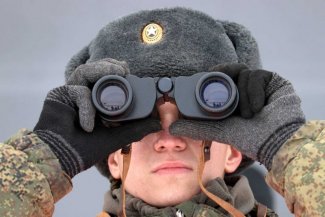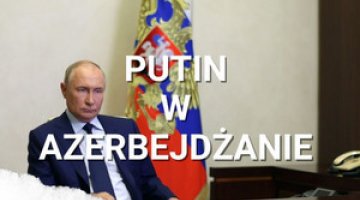Russia is exacerbating the situation in the Donbas

The situation in the occupied part of eastern Ukraine has significantly worsened in recent days. On 18 February, the self-proclaimed authorities of the so-called Donetsk and Luhansk People’s Republics (DPR & LPR), which are fully subordinate to Russia, called on women, children and the elderly to evacuate to Rostov oblast. The operation was apparently coordinated with Moscow and, according to announcements, covers around 700,000 people, which would mean the displacement of all residents holding Russian passports. The Russian Federation’s Ministry of Emergency Situations stated that around 61,000 evacuees had arrived in Rostov oblast by 20 February (although the local authorities have given a figure of fewer than 7000); the displaced persons are to be resettled in various regions of Russia.
The pretext for the announcement of the ‘evacuation’, as well as the forced mobilisation of men aged 18–55, is the alleged intensification of shelling of DPR/LPR territory by Ukrainian troops, which –according to the separatists – indicates that Kyiv is preparing a large-scale military operation. The self-proclaimed authorities say that on the day of the evacuation announcement, shelling of the territory of the ‘people’s republics’ began, although this should be seen as a provocation by the ‘separatist’ forces. This was indirectly confirmed in a statement by the OSCE’s Special Monitoring Mission of 19 February, which stated that 1321 explosions of ‘undetermined origin’ had been recorded (the content of the mission’s statements is influenced by Russian participation in it). At the same time, the separatists have been carrying out disinformation actions against Kyiv, and have been intensively shelling Ukrainian troops’ position. Whereas since the beginning of January an average of between two to five shellings were recorded per day in the area of the demarcation line, on 17 February there were 60 such incidents, 66 on 18 February, and up to 136 on 19 February.
On 19 February, President Vladimir Putin discussed the Ukrainian situation with permanent members of the Security Council, after which he took command of the ongoing strategic nuclear exercises. The Kremlin has constantly accused Kyiv of provocations and making preparations for an offensive in the Donbas; it has also introduced a new element to its message, namely blaming the West for ignoring Ukrainian actions leading to the ‘genocide’ of the DPR & LPR’s inhabitants and ‘encouraging Kyiv to military aggression’. The situation in Ukraine will be the subject of extraordinary meetings of the State Duma and the Federation Council scheduled for 22 February.
Preparations are underway in Ukraine to repel possible aggression. Voluntary territorial defence forces are being organised, but as yet no decision to begin a general mobilisation has been announced. Defence Minister Oleksiy Reznikov said on 20 February that Russia would not undertake any aggression in the near future.
Commentary
- The actions taken by the DPR & LPR’s authorities (shelling their own territory, anti-Ukrainian provocations, the ‘evacuation’) constitute a special operation, planned by Russia, which could serve as grounds to officially grant them Russian military aid. Element of these actions include constant attempts to provoke the Ukrainian Armed Forces to attack the separatists’ position, and accusations that Ukrainian troops have committed mass crimes against the civilian population. The brutalisation of the scenario is intended to provoke a wave of aversion towards Kyiv, and to question the thesis that Ukraine can resolve the crisis peacefully. This message is aimed primarily at Russian society; it is intended to arouse anti-Ukrainian sentiment in Russia and to justify the possible provision of military aid to the DPR & LPR. The so-called ‘people’s republics’ activities also include disinformation and psychological operations intended to provide an excuse to initiate a new phase of the armed conflict. These include false reports that sabotage operations are being conducted by Ukrainian forces with the support of Western countries (including Poland), whose purpose is to cause large losses to the civilian population.
- For its part Ukraine, based on its intelligence data, has stated that the separatist forces are receiving constant material and technical assistance from Russia (including towed and self-propelled howitzers, multiple rocket launchers, tanks, anti-aircraft defence systems, towed anti-tank guns and armoured fighting vehicles). Kyiv sees the troop movements as antagonistic actions that may precede an open armed conflict. There have also been reports about the appearance in the DRL & LRL of mercenaries from Russia (the so-called Wagner group), which may be intended to disguise the introduction of regular Russian special force units.
- The Kremlin has stated that the basic conditions for the de-escalation of tensions are Kyiv’s unconditional implementation of the Minsk agreements on Russian terms (i.e. the de facto recognition of the subjectivity of the so-called people’s republics), and for Western countries to end their military cooperation with Kyiv, including the cessation of arms deliveries. The Russian position – which does not include any signals for de-escalation, and allows no room for negotiation – is another attempt to force the West to put pressure on Kyiv to accept the Russian ultimatum. If this does not happen, Russia has threatened to resort to ‘military-technical solutions’. This means that at this stage the Kremlin is ready to resume the armed conflict in the Donbas, and possibly to extend it to include open support from Russian air and missile forces in defence of the ‘people’s republics’. According to the messages sent by Moscow, various variants of the military option are still being considered, and the tension related to the possible outbreak of a full-scale conflict will continue. The presidents of France and Russia held two phone calls on 20 February, during which it was announced that a meeting of the Tripartite Contact Group to resolve the conflict in Donbas would be held; also a communiqué was issued concerning a meeting between US Secretary of State Anthony Blinken and Russian foreign minister Sergei Lavrov (scheduled for 24 February), which is to serve as a preliminary to a Biden/Putin summit. These plans indicate that Russia still counts on the West putting clear pressure on Kyiv to implement at least some of its demands.
- Moscow is also continuing to use its military presence in Belarus to increase pressure on Ukraine and the West. On 20 February, after the official end of the Russian-Belarusian Allied Resolve 2022 military exercises, the Belarusian defence minister Viktar Khrenin announced that the leaders of Russia and Belarus had decided to continue the test of the Union State’s reaction forces. The decision was substantiated by the increase in foreign military activity in the vicinity of its external borders, and the aggravation of the situation in the Donbas. This means that Russian units will remain in Belarus (they currently number around 30,000 soldiers); in the long term, this may turn into a permanent, rotating and indefinite presence of Russian troops in that country. During the ongoing crisis, Minsk has remained unconditionally loyal to the Kremlin. One constant element of Moscow’s strategy is to suggest that it is ready to launch an armed conflict at any moment, including from Belarusian territory, thus supporting a potential attack on Kyiv.




